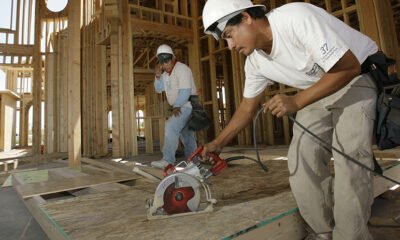affordable housing
Federal Initiatives Poised to Slash Housing Costs: A Closer Look

As the housing market continues to present challenges for renters and prospective homeowners, the Biden administration has unveiled a series of initiatives aimed at alleviating the financial burden faced by many households. These measures include a substantial $100 million allocation to foster the construction of affordable housing and streamline the loan application process involved in new housing developments.
Among the proposals, some require Congressional approval, such as a cap on rent increases imposed by corporate landlords. Others, however, will be implemented through administrative actions without the need for legislative consent, including a new rule from the U.S. Department of Housing and Urban Development (HUD) to allow for the construction of duplexes and triplexes according to specific safety and manufacturing standards.
As the Biden administration pushes its housing agenda, Vice President Kamala Harris and former President Donald Trump are vying for voter support on economic matters. Recent polling data from Financial Times/Michigan Ross indicates Harris holds a slight edge over Trump in economic trust, a shift from previous months when Trump was more favored.
To bolster housing affordability, the administration’s initiatives also target the repurposing of federal land and propose regulations to mitigate rent hikes from corporate landlords. While housing experts acknowledge the potential benefits of zoning reforms, some argue these efforts don’t go far enough to address the crisis.
During a campaign event, Harris outlined her housing strategy, which aligns closely with the administration’s objectives. She emphasized the importance of curbing corporate landlord practices that escalate rent prices and pledged to dismantle zoning obstacles in order to facilitate the creation of affordable housing. Harris proposed offering up to $25,000 in payment assistance for first-time homebuyers who demonstrate timely rent payment over two years.
“We will eliminate barriers and cut red tape across state and local levels, establishing a goal of producing 3 million new affordable homes by the end of my first term,” Harris stated emphatically.
Indivar Dutta-Gupta from Georgetown University commended the administration’s focus on simplifying the construction process for affordable housing. He noted that reducing bureaucratic delays can significantly lower costs. In contrast, Kenneth Chilton, a professor at Tennessee State University, pointed out the disparity in the housing market, where homes priced between $100,000 and $300,000 are increasingly scarce while higher-end properties proliferate.
“The focus has largely shifted to affluent buyers,” Chilton remarked, highlighting the imbalance in supply and demand for affordable homes. The increasing trend of corporate landlords further complicates the landscape, with their business models impacting rental pricing across the board.
With efforts to tackle the housing crisis underway, there remains concern about assisting potential homebuyers who struggle against all-cash offers from investors. Legislative efforts to curtail corporate landlord influence have yet to pass Congress, despite growing recognition of their impact on housing affordability.
Dutta-Gupta pointed out the Biden administration’s commitment to providing substantial funding, albeit below what is necessary to meet existing demands. He emphasized the importance of communication in ensuring communities understand available resources and incentives aimed at fostering pro-housing policies.
Meanwhile, the looming threat of homelessness drives the need for broader policy measures. The National Alliance to End Homelessness noted that 2023 witnessed record levels of homelessness, underscoring the pressing requirement for expanded access to housing, especially for vulnerable groups. Solutions like housing vouchers and emergency rental assistance are becoming increasingly crucial.
As interest rates began to stabilize following extensive hikes by the Federal Reserve, the focus remains on sustaining affordable housing initiatives to avoid exacerbating the struggles faced by many Americans. The intersection of rising rents and incomes that have not kept pace signifies a dire need for strategic responses at multiple levels to foster an equitable housing market.


















